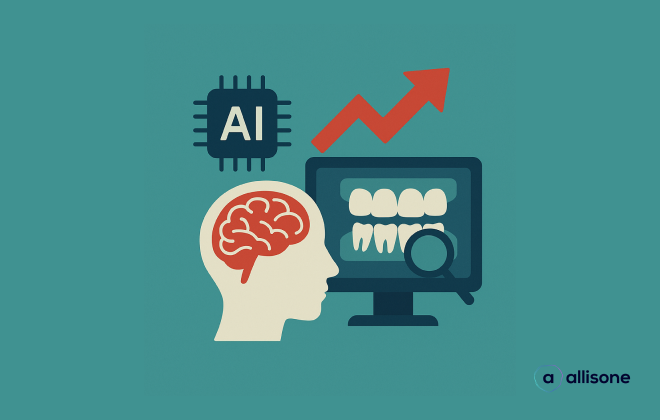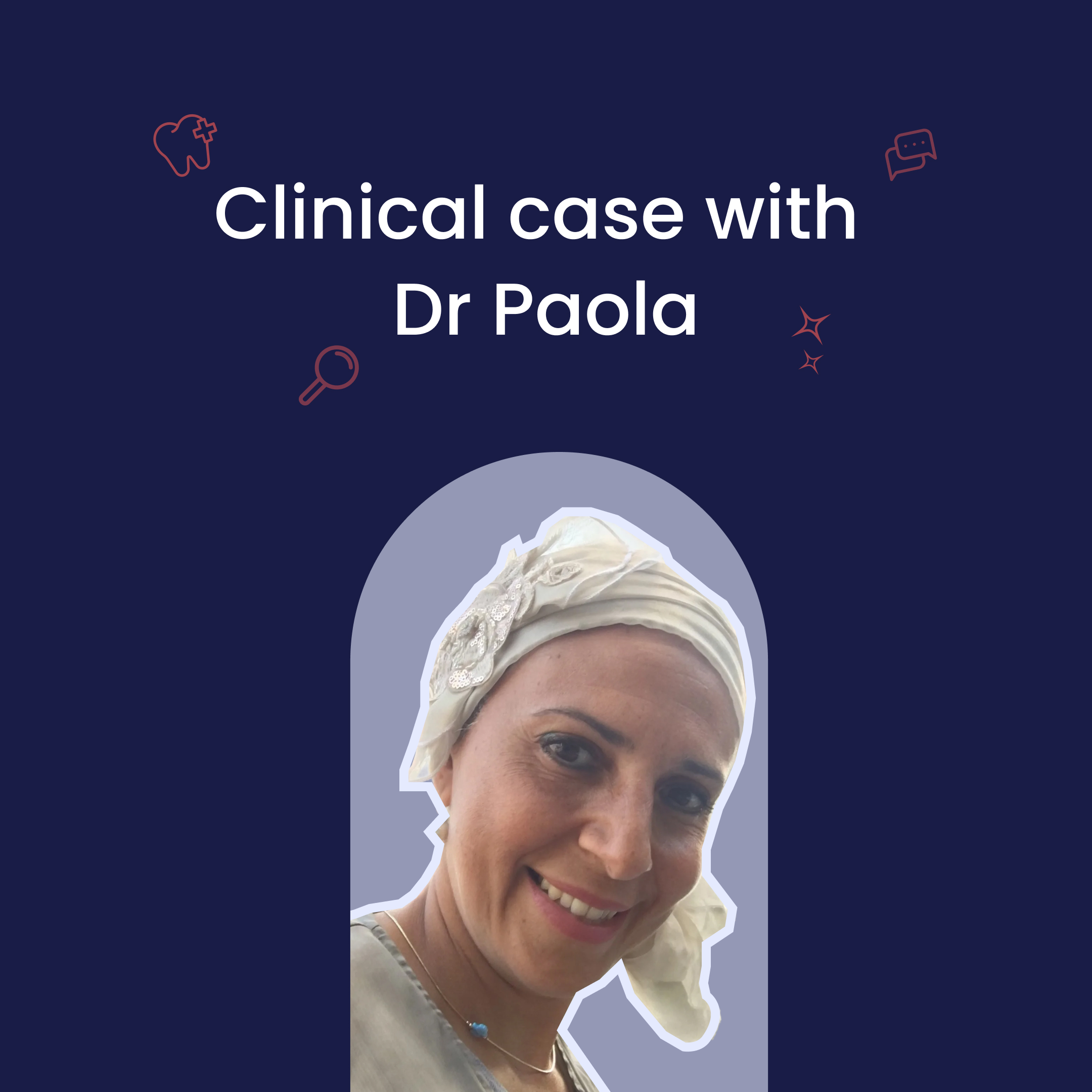
In dentistry, accurate diagnosis and a clear treatment plan are obviously essential pillars in ensuring effective, reassuring care for the patient.
The advent of technology, and in particular artificial intelligence such as Allisone.ai, is radically transforming the way dentists approach their care.
Here, we spoke to one of our dentists about his day-to-day use ofAllisone and a specific clinical case. This case illustrates how Allisone.ai has helped to clearly explain diagnosed aspects to the patient, highlighting its significant impact on visualizing dental challenges and improving communication with the patient.
Clinical case presentation
The patient presented for an initial consultation due to mobility of the crown of tooth 36, accompanied by mild but tolerable pain. The patient's history indicated irregular visits to the dentist, despite previous procedures including crown implantation. The initial clinical examination suggested a problem limited to tooth 36, but the patient did not perceive the extent of the problem in any meaningful way due to the low intensity of the pain.
A panoramic radiograph was taken, revealing a clear image of the dental structures and surrounding tissues. Thanks toAllisone's advanced visualization technology, it was possible to highlight a substantial infection affecting not only tooth 36, but also the adjacent tooth 37. This infection had led to significant bone resorption, compromising the viability of both teeth.
Traditionally, a clinical examination might not effectively communicate the full extent of the problem to the patient. However, by using Allisone.ai with the existing panoramic radiograph, the practitioner was able to provide the patient with an accurate and detailed visualization of the condition already identified, thus improving their understanding.
.png)
The impact of this visualization was twofold. On the one hand, it enabled the dentist to prepare a treatment plan based on a complete understanding of the anatomical and pathological challenges present. On the other hand, it provided the patient with a clear and comprehensible picture of the severity of his condition, which was essential to his acceptance of the need for the proposed treatments.
Treatment strategy
Given the severity of the infection and bone resorption, it was decided to extract both affected teeth to avoid future complications. Detailed visualization enabled the patient to clearly understand the need for extraction, despite the absence of significant pain. The decision also included planning for bone grafting to preserve alveolar volume for future implantation.
Thanks to the various visualization and treatment simulation functions available on Allisone, the patient was able to clearly see images of his affected teeth, understand the progression of the infection and grasp the urgency of the proposed interventions. This transparency helped to dispel uncertainties and boost confidence in the practitioner's recommendations.
.png)
Extraction was performed without complications, followed immediately by bone grafting. The patient was informed in detail about post-operative care and the need for follow-up for possible implantation.
The patient was regularly monitored for healing and integration of the bone graft. Plans for dental implant placement were discussed, with pre-operative visualizations to determine optimal implant locations.
.png)
During treatment, our Allisone software also facilitated ongoing dialogue with the patient. Its use enabled a clear and comprehensible visualization of dental problems, boosting the patient's confidence in the proposed treatment plan. In addition, Allisone.ai helped simplify explanations of complex procedures, improving the overall patient experience, involvement and adherence to the recommended treatment.
The surgeon was able to begin this rehabilitation process with the placement of the two implants, offering not only a lasting solution for the patient, but also a restoration of the functionality and aesthetics of his dentition, resulting in a significant improvement in his quality of life.
Feedback from the dental surgeon
We were also able to gather feedback from the dental surgeon's experience of using the platform. In addition to the precise and detailed visualization of the anatomical situation, which is crucial to effective treatment planning, Allisone. ai served as a communication bridge between the practitioner and the patient, helping the latter to visualize and understand the proposed treatment, thereby strengthening his commitment and compliance with the care plan.

The practitioner also noted a significant improvement in operational efficiency. The ability to draw up the treatment plan, annotate observations and analyses, and integrate simulations and explanatory care sheets directly into the automatically generated report reduced the time needed for planning and communication. This has not only improved the patient experience, but also optimized the use of clinical time.

This case illustrates perfectly how technology can increase diagnostic accuracy and improve dental care management, enabling practitioners to make informed decisions and inject confidence into their communication with the patient. The use of artificial intelligence such as Allisone.ai not only simplifies medical processes; it also transforms the patient experience, providing greater transparency and understanding of their treatment.
As dentistry continues to evolve, the integration of new technological solutions will remain paramount to staying at the cutting edge in terms of quality of care, optimizing protocols and maintaining patient satisfaction.
Articles en lien
Lorem ipsum dolor sit amet, consectetur adipiscing elit.

Comment l’intelligence artificielle optimise le diagnostic médical et la compréhension patients

L'avenir des cabinets dentaires : intelligence artificielle et gestion connectée au service des praticiens






